Bikeways Program
 BIkeways Program
BIkeways Program

Building the best bike network in the country. Crossing barriers, providing low-stress options, and serving the meaningful destinations in people's lives.
 The Chicago Cycling Strategy
The Chicago Cycling Strategy

A safe, comfortable, and connected cycling network that serves all of Chicago not only improves and expands our city's transportation system—it also helps to make our communities healthier, cleaner, more vibrant, and more equitable. Biking continues to grow throughout Chicago, and we're witnessing a tremendous shift in who is riding a bike, the types of trips made by bike, and how biking is recognized as an essential transportation option. CDOT’s Chicago Cycling Strategy outlines an equitable and efficient approach to implementing a cycling system that better serves everyone.
 Explore the Network
Explore the Network

Learn about different types of bikeways to help plan your route
Find the best biking streets for getting around the city
Look ahead at scheduled projects and track their progress
Read about featured projects, methods, and materials
 Featured Project
Featured Project

Milwaukee Avenue Corridor
There are many exciting Complete Streets projects that are recently completed, underway, or upcoming along various segments of Milwaukee Avenue. A Milwaukee Avenue that is safer for cyclists is safer for everyone: people walking, biking, riding transit, and in cars.
 Maintaining the Network
Maintaining the Network

Sweeping & Plowing Protected Bike Lanes
To support the growth of protected bike lanes throughout Chicago, CDOT has increased the number of specialized, smaller vehicles in our fleet that can sweep and plow protected bike lanes. Vehicles are deployed daily Monday through Friday to ensure the upkeep of our bike network.
VIEW THE MAINTENANCE MAP & SCHEDULE
CDOT works hard to stay on this schedule, however, please be advised that equipment malfunction and/or construction activity may cause temporary disruption to the schedule. Additionally, larger obstructions like debris may require different equipment or more time to remove.
 Featured Publications
Featured Publications

-
Chicago Cycling Strategy Update - 2023 - Document outlining the department’s community-driven approach to expanding the bike network and making Chicago a more equitable, safe, and inviting place for cycling. An executive summary of the Cycling Strategy is also available.
-
CDOT Strategic Plan - Aligning our streets not just with our efforts to maintain roads and keep people moving, but with our values and an abiding commitment to justice for all Chicagoans.
-
Chicago Bike Map - CDOT produces a FREE Chicago Bike Map every spring. In addition to bikeways, the map includes bike shop locations, CTA and Metra stops, and Divvy stations. Hard copies of the Chicago Bike Map are available while supplies last at Aldermanic offices and at bike shops throughout the City
 Additional CDOT Programs for Biking
Additional CDOT Programs for Biking

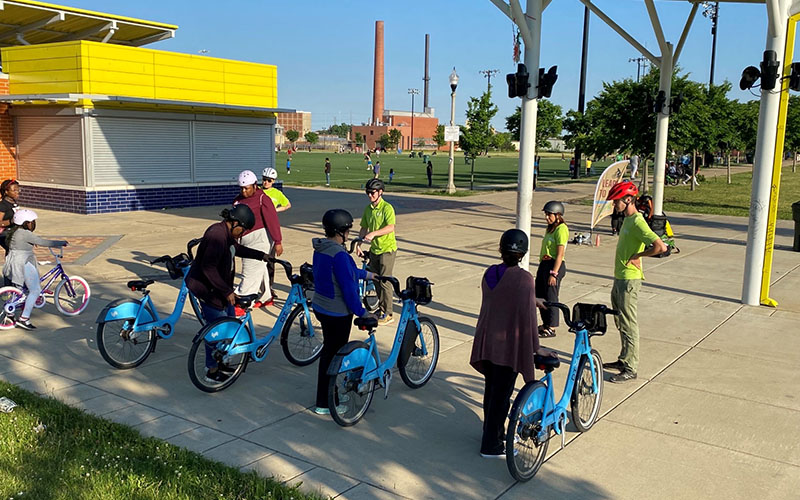
SAFE Ambassadors
The outreach and engagement team within CDOT that conducts direct outreach and education at hundreds of public events each year, providing free learn-to-ride lessons for adults and children, teaching safe mobility skills at elementary schools, and in high school driver education modules.
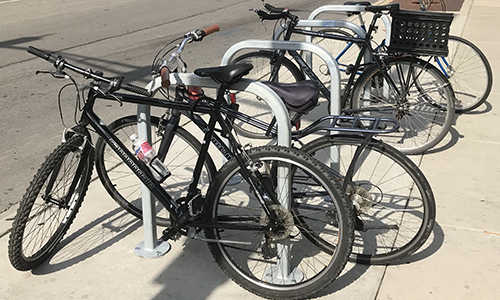
Bike Parking
CDOT provides free public bike parking throughout Chicago. More than 17,000 bike racks and on-street bike corrals have been installed. Learn more and request a bike rack at a local destination.
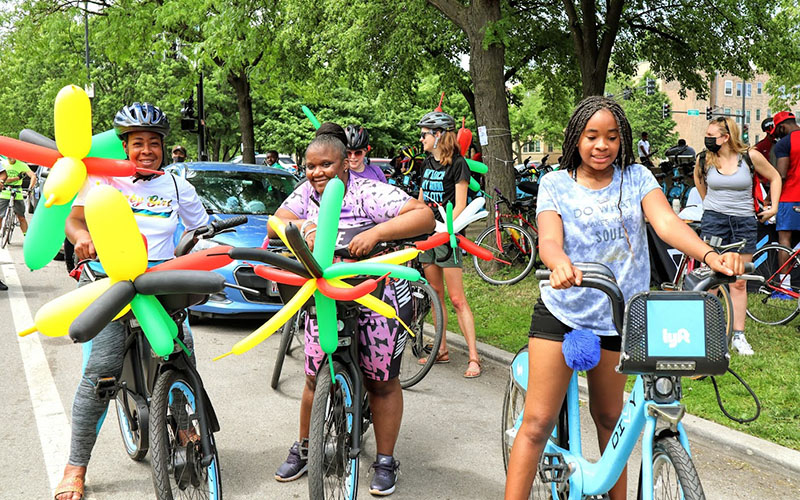
Divvy
Chicago’s public bike sharing system with hundreds of stations and thousands of bikes across Chicagoland.
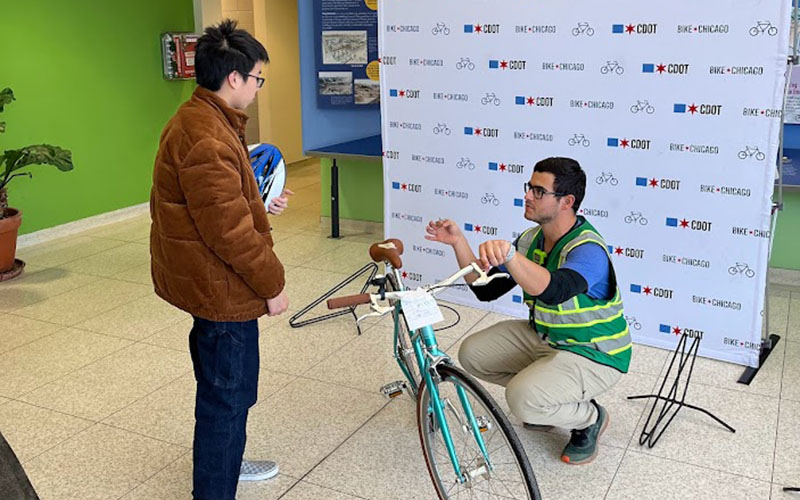
Bike Chicago
CDOT’s ambitious effort to distribute 5,000 free bicycles to Chicagoans who need them.
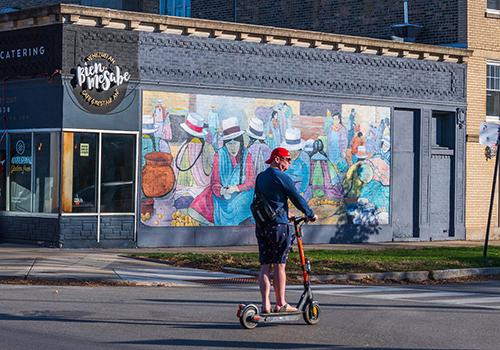
Scooter Sharing
Shared scooters are available for rent in Chicago through the Divvy bikeshare system as well as through three companies awarded business licenses to operate: Lime, Spin and Superpedestrian.
